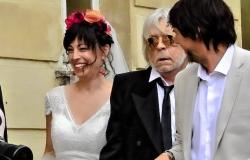THE Portrait of Miss Lieser by Gustav Klimt, a missing painting which recently resurfaced, was sold for 30 million euros on Wednesday in Vienna, a record for Austria but at the lower end of the auction house’s estimate range.
Far from the record
Estimated at between 30 and 50 million euros, it was ultimately sold at the bottom of the range of estimates from the house “im Kinsky”, far from the 86 million euros reached in June 2023 in London for another canvas of this artist.
The event nonetheless remains historic, “no comparable work” having ever been offered in Klimt’s native country, according to Claudia Mörth-Gasser, head of the modern art section.
“No one expected that a painting of this importance, which had disappeared for a hundred years, would resurface,” she says, while the previous Austrian record amounted to “only” seven million euros for a Flemish painting sold in 2010. This resurrected and unsigned portrait therefore caused a sensation. Especially since it is very well preserved and has never left Austria.
Since it was unveiled in January, people have rushed to admire it at exhibitions preceding the sale in Switzerland, Germany, the United Kingdom, Hong Kong and therefore in Vienna where some 15,000 visitors flocked in nine days.
Mystery as to the identity of the model
The canvas, begun in 1917 and remaining unfinished, represents a young brunette woman with precise features, adorned with a large cape richly decorated with flowers on a bright red background.
The painter died the following year and a mystery, hotly debated in the specialist press, still surrounds the identity of the model. Only one thing is certain: she comes from the Lieser family, a great Jewish industrial dynasty, patron of the artistic avant-garde.
But is she one of the two daughters named Helene and Annie of Henriette (Lilly) Lieser, a wealthy divorcee who was a pioneer in the emancipation of women? Or that of his brother-in-law Adolf, Margarethe, as claimed in a first complete catalog of Klimt’s works, produced in the 1960s?
The only photo of the painting known to date, probably taken in 1925 as part of an exhibition, would suggest that it belonged to Lilly Lieser that year.
Looted by the Nazis?
According to the daily Der Standard, which is based on correspondence archived in an Austrian museum, she could have entrusted it to a member of her staff before dying in deportation at the end of 1943.
The painting would then reappear in the possession of a Nazi merchant before his daughter, then distant relatives, inherit it in turn. But for Kinsky, which specializes in restitution procedures, it is one “hypothesis among others”.
After the war, the painting was never claimed, unlike other goods, by one of the three Lieser descendants who had all survived.
Bound to confidentiality, Claudia Mörth-Gasser explains that her employer was contacted two years ago for legal advice by its owners, who wish to remain anonymous. Im Kinsky informed the current beneficiaries of the two Lieser branches, who live in particular in the United States. Some traveled to see the painting, before signing a contract with the owners, thus removing an obstacle to the sale of the painting. Nothing has filtered out about the terms of this amicable agreement and experts are criticizing a procedure deemed too rapid, despite the uncertainties over the fate of a work of immense value.
“Its provenance not having been fully clarified until now”, the time should have been taken for a more in-depth examination, says the weekly Profile Monika Mayer, the head of archives at the Belvédère museum, which houses the famous Kiss by Klimt.
Moreover, the painting was not presented in the United States, for fear that it would be confiscated by the courts in the event of a dispute, as is the rule for works suspected of being from spoliations.






